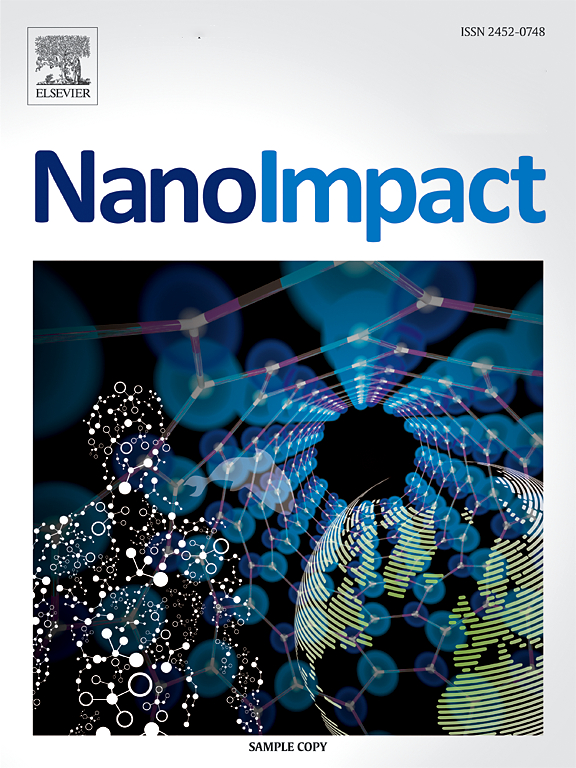Impacts of polyglycolic acid and analogues on glycolipid metabolism and circadian behavior in zebrafish
IF 5.5
3区 环境科学与生态学
Q2 ENVIRONMENTAL SCIENCES
引用次数: 0
Abstract
For the past few years, new biodegradable polymers, such as polyglycolic acid (PGA) and polylactic acid (PLA), have been promising materials to solve the remarkable environmental issue, of microplastics (MPs) pollution. In this research, the impacts of five MPs, including PGA, PLA, polybutylene succinate (PBS), polyhydroxyalkanoate (PHA), and polybutylene adipate terephthalate (PBAT), were analyzed on zebrafish with different concentrations. We found that PGA and PLA at 1 mg/L did not have obvious effects on liver function, glucose level, and circadian rhythm in larvae. However, Exposure to PBS, PHA, and PBAT at 1 mg/L could cause mild pathological injury of the liver and decreased glucose levels. Furthermore, exposure to PBS, PHA, and PBAT at 100 mg/L caused abnormal early development and pathological injury of the liver, increased ALT and TG levels, as well as decreased glucose levels. The molecular explanation of this was the variational expression levels of genes related to many aspects of biochemical pathways, such as oxidative stress, apoptosis, endoplasmic reticulum stress, fatty acid oxidation, and glucose metabolism. Meanwhile, larvae exposed to PBS, PHA, and PBAT at 100 mg/L showed chaos in circadian behaviors, accompanied by the disturbed expression of clock genes. Overall, we observed a greater adverse effect of PBS, PHA, and PBAT relative to PLA and PGA when we compared the effects induced by five MPs at the same exposure concentration. Our study provided important data to evaluate the ecological risk of new biodegradable polymers.

聚乙醇酸及其类似物对斑马鱼糖脂代谢和昼夜行为的影响。
近年来,新型可生物降解聚合物,如聚乙醇酸(PGA)和聚乳酸(PLA),已成为解决微塑料污染这一显著环境问题的有希望的材料。本研究分析了PGA、PLA、聚琥珀酸丁二酯(PBS)、聚羟基烷酸酯(PHA)和聚己二酸丁二酯对苯二甲酸丁二酯(PBAT) 5种MPs对斑马鱼不同浓度的影响。结果表明,1 mg/L的PGA和PLA对幼虫肝功能、血糖水平和昼夜节律无明显影响。然而,暴露于1 mg/L的PBS、PHA和PBAT可引起肝脏轻度病理性损伤和血糖水平降低。此外,暴露于100 mg/L的PBS、PHA和PBAT会导致肝脏早期发育异常和病理损伤,ALT和TG水平升高,葡萄糖水平降低。分子的解释是与许多生化途径相关的基因表达水平的变化,如氧化应激、细胞凋亡、内质网应激、脂肪酸氧化和葡萄糖代谢。同时,PBS、PHA和PBAT浓度为100 mg/L时,幼虫的昼夜行为出现混乱,生物钟基因的表达受到干扰。总的来说,当我们比较相同暴露浓度下五种MPs诱导的效应时,我们观察到PBS、PHA和PBAT相对于PLA和PGA的不良影响更大。本研究为评价新型生物降解聚合物的生态风险提供了重要数据。
本文章由计算机程序翻译,如有差异,请以英文原文为准。
求助全文
约1分钟内获得全文
求助全文
来源期刊

NanoImpact
Social Sciences-Safety Research
CiteScore
11.00
自引率
6.10%
发文量
69
审稿时长
23 days
期刊介绍:
NanoImpact is a multidisciplinary journal that focuses on nanosafety research and areas related to the impacts of manufactured nanomaterials on human and environmental systems and the behavior of nanomaterials in these systems.
文献相关原料
公司名称
产品信息
索莱宝
phosphate-buffered saline
 求助内容:
求助内容: 应助结果提醒方式:
应助结果提醒方式:


